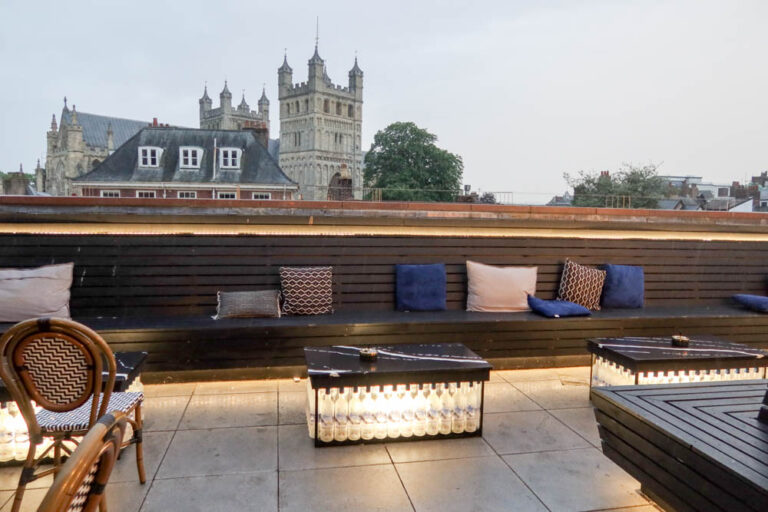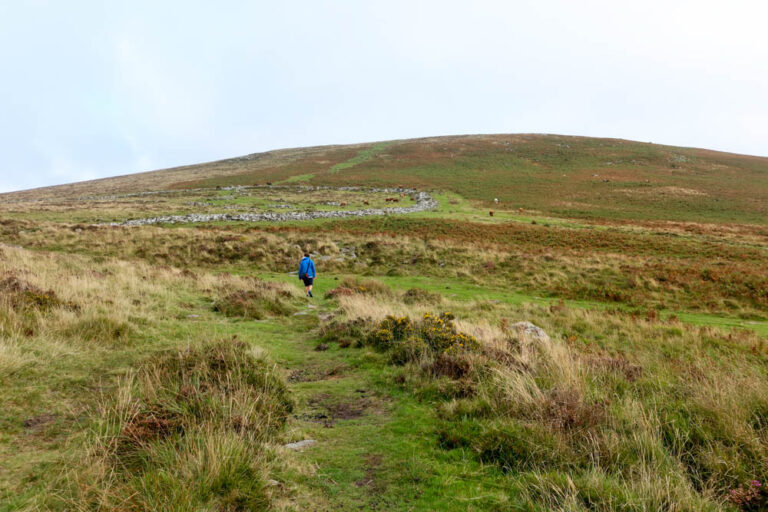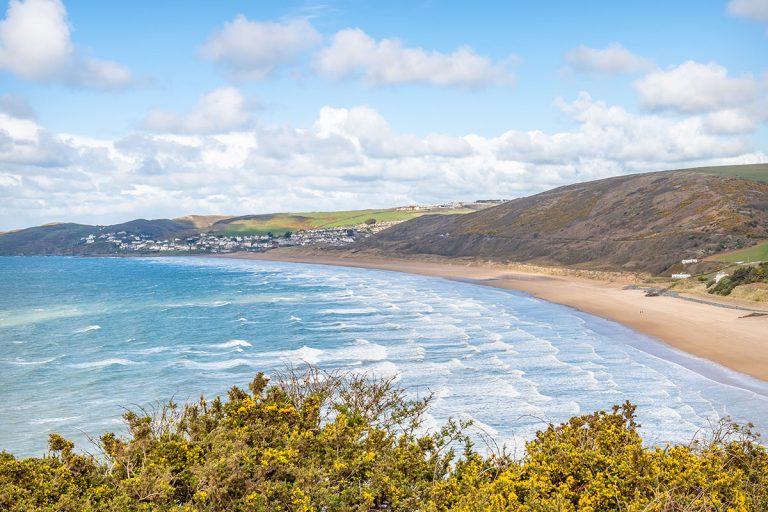20 best things to do in Lynton and Lynmouth (2024 guide)
Are you keen to check out the very best things to do in Lynton and Lynmouth? Explore them with my full list!
Situated at the western edge of Exmoor National Park, in Devon but virtually next to the border with Somerset, Lynton and Lynmouth are sister villages connected to each other by a funicular railway.
Sometimes dubbed “the Switzerland of England” because of the beautiful views of its hills that can be enjoyed from the water, Lynmouth’s brimming with coastal attractions, while Lynton sits on a hill above the village and has a few more local things to do.
Bright green hills roll into a quaint harbour, creating a scene that’s straight off a postcard.
The villages are also the gateway to the Valley of the Rocks and are on the South West Coastal path.
I’m a Devon local, and I’ve visited Exmoor National Park – including Lynton and Lynmouth – numerous times.
So here’s my full list of the best attractions in Lynmouth and Lynton!
Things to do in Lynton and Lynmouth
The best things to do in Lynton and Lynmouth include the remarkable Valley of Rocks, the fascinating funicular railway (the only of its kind in the country!) and the beautiful Glen Lyn Gorge.
Many Exmoor villages don’t have a huge amount to do – just walking around is the main attraction – but Lynmouth and Lynton are packed full of exciting attractions!
1. Explore The Valley of Rocks
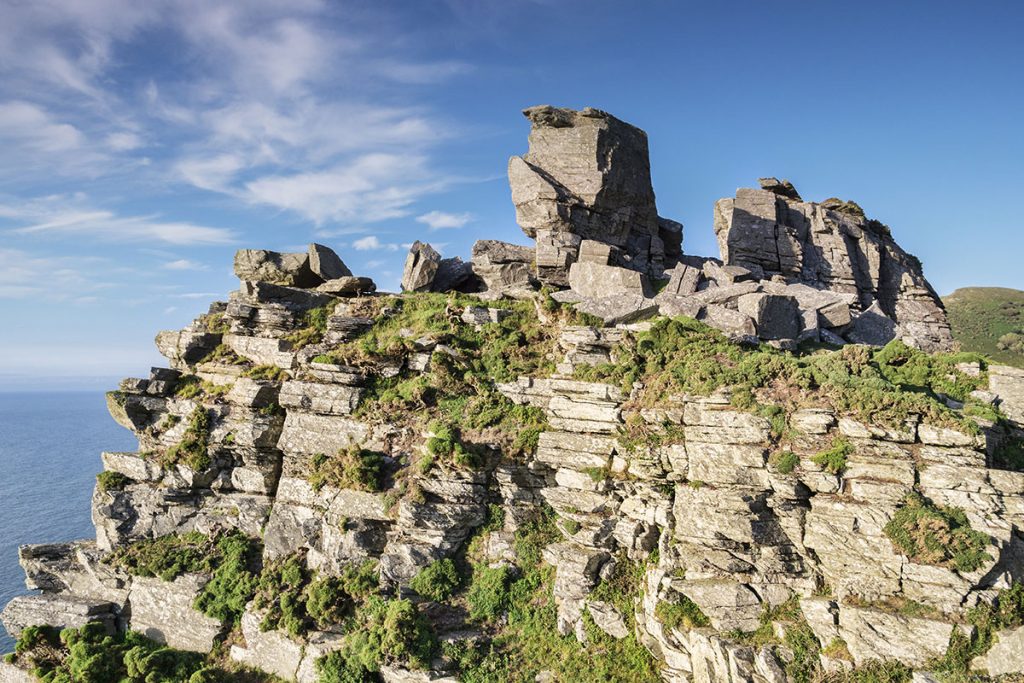
My favourite part of Lynton, located just outside the village, is the Valley of Rocks.
The prehistoric rocky outcrop was made during the last ice age, and they are a really unique natural attraction that you won’t find anywhere else in Exmoor – and not really anywhere else in the country!
This makes it undoubtedly one of the best things to do in Lynton and Lynmouth.
The path is paved, so it is relatively accessible and easy to explore, but for those who want a bit more of an adventure, you can climb up the rocky hillsides to reach the peaks of the rocks.
Just make sure to stick to marked pathways and be very careful at the top – there is no railing, and people have fallen off in the past!
Watch out for feral goats as you explore; their legs cling to the steep hillsides as they traverse the cliffs.
I was mesmerised by how much grip they had as they walked over the terrain.
From the Valley of Rocks, you can follow the path to reach Lynton, and from there descend into Lynmouth.
Read more about the Valley of Rocks here.
2. Walk down the Poet’s Walk
From Lynton, take the zig-zag path down to Lynmouth – and enjoy some poetry!
This is the Poet’s Walk, named so because of the poets who used to be inspired by the stunning landscape of Exmoor.
The most notable poet is Coleridge – Lynmouth is located at the end of the 50-mile Coleridge Trail which spans through the Quantocks Hills.
It encompasses some of the natural beauty featured in his poetry.
Famous poets Wordsworth and Shelley also visited the sister villages, and you can read excerpts from their work and information about their lives as you walk down the path.
3. Take in some of the best Lynmouth Views
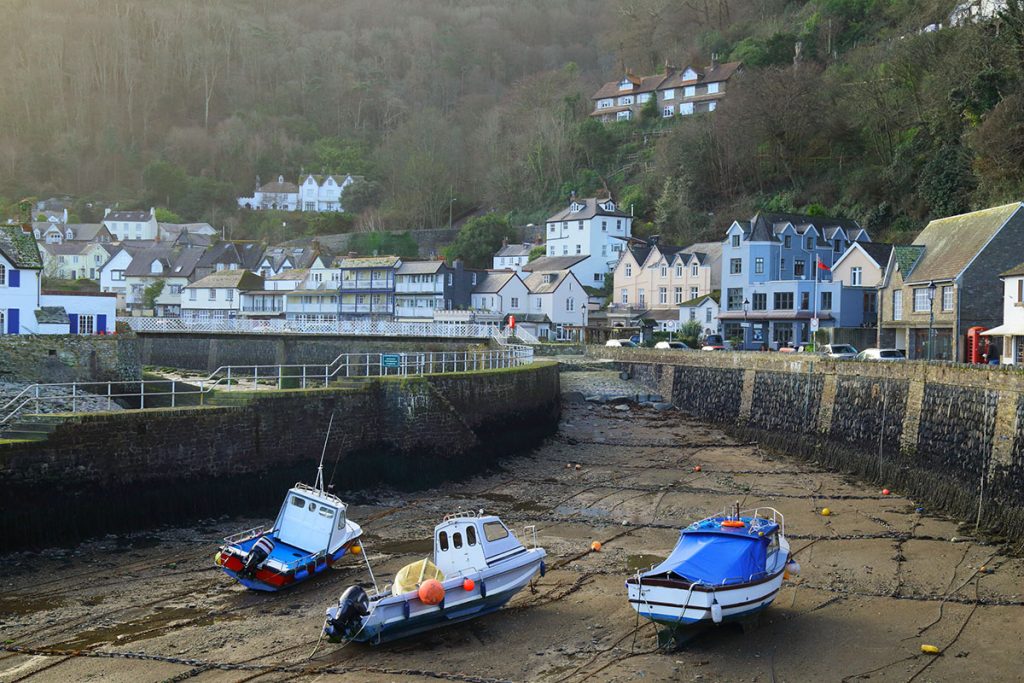
From the vantage point in Lynton, there’s a snapshot with a spectacular vista of Lynmouth.
Green hillsides dotted with coloured houses and a harbour looking out to sea make up this landscape.
In fact, it’s so stunning that it has been called the “Switzerland of England” (despite Switzerland being nowhere near the sea, and Lynmouth being very much coastal…).
Many people come to Lynmouth for the view alone, and I certainly don’t blame them. It really is something special.
Top tip: If you visit Ilfracombe on your North Devon trip, you can take a boat trip to see Lynmouth from the sea; it is even more spectacular at this vantage point.
There is also a stop to see a seal colony and a waterfall!
4. Learn the tragic history at the Flood Memorial Hall
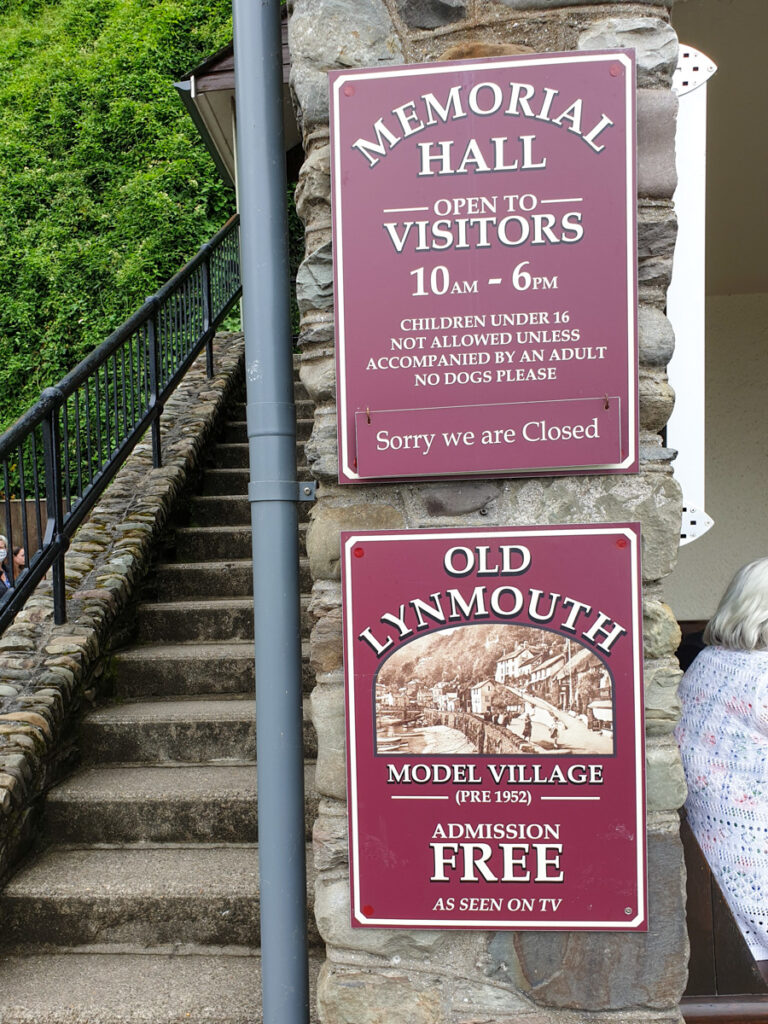
The coastal location of Lynmouth is a blessing and a curse.
It has proved vital for the towns’ economies by enabling their two main industries over the years (fishing and tourism), but its setting caused it to be the site of tragedy in 1952.
In August 1952, there was a flood which has claimed to be the “worst river flood in English history“.
More than 100 buildings were destroyed and 34 people died.
It took six years to rebuild Lynmouth; nowadays flood preventions have been put in to protect against up to 1.5 times the amount of water that flooded the village on that fateful day.
The flood memorial hall discusses the 1952 flood and its implications for North Devon.
5. Admire the Model Railway
The Lyn model railway is based on a British train network from 1935-40; it’s a must-visit for railway enthusiasts.
But the intricate features of each model are fascinating, making it a worthwhile visit for anyone who’s not a rail fan too!
Entry is free, but donations are appreciated.
6. Take a ride on the Funicular Railway
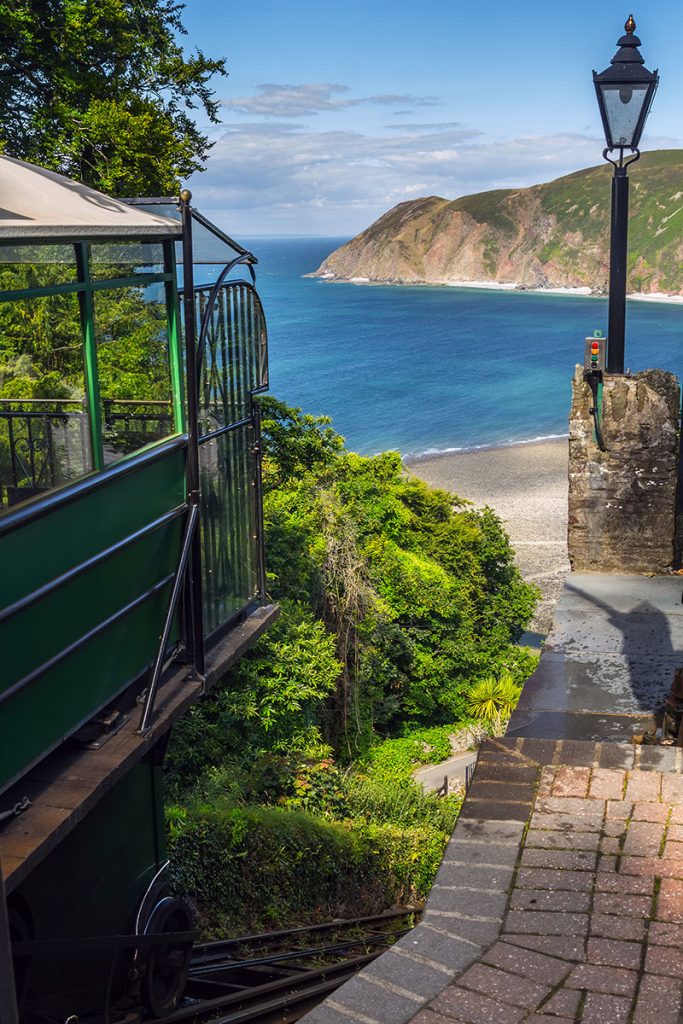
This is what the hordes of tourists come to Lynmouth and Lynton for!
The funicular railway is the only still functioning fully powered water railway in the UK.
It operates on water from the East Lyn River and works by gradually displacing the water and balancing the two carriages, which run simultaneously.
There used to be a few of these in the country, including one in Clifton, Bristol, but all of the others have been discontinued.
Take a ride on the Grade-II listed heritage railway, enjoying sweeping views of Lynmouth as you progress up or down.
At the top, there is a Cliff Top Cafe – the perfect place for a Devonshire cream tea.
7. Catch a film at Lynton Cinema
This one is just a quick Lynton attraction – unless there’s a movie on while you’re in town!
Look out for the independent Lynton cinema while walking around; it is the smallest UK town to have its own cinema.
If you are staying, of course, you might want to check out a movie there.
8. Explore Watersmeet
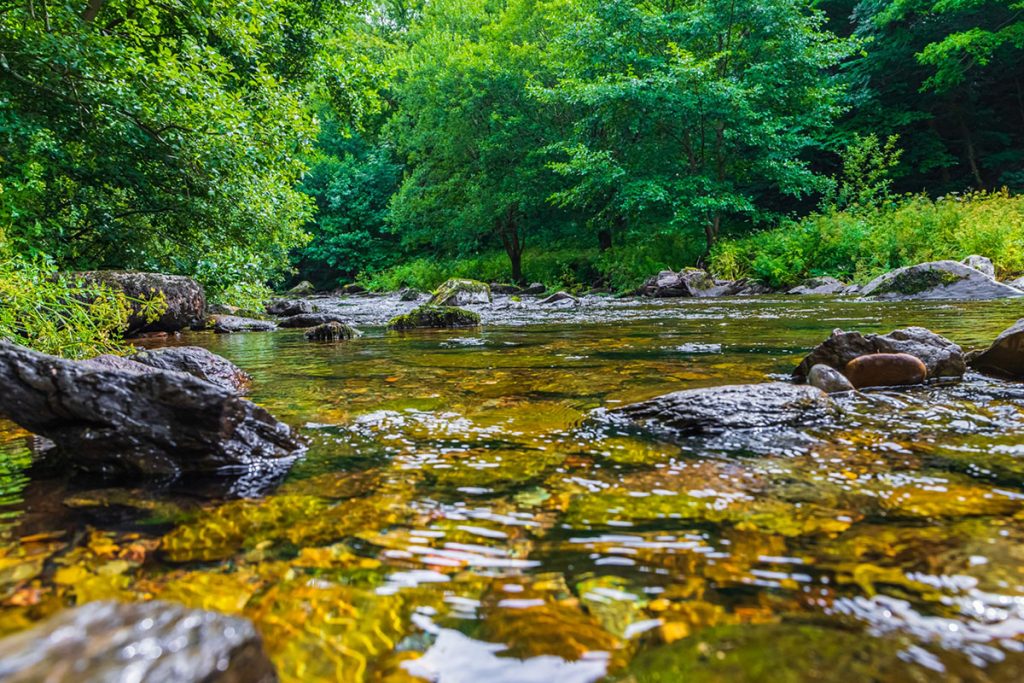
This National Trust-managed area is one of the country’s deepest river gorges and is the meeting place of the River Lyn and Hoar Oak Water.
Watersmeet is a vivacious area, perfect for some short walks, and there are even some more adrenaline-boosting activities like canoeing on offer!
Once you’ve explored, have a rest at Watersmeet House.
This is a fishing lodge from the 19th century and has the title of England’s oldest Edwardian tea room.
Watersmeet is a ten-minute drive from Lynmouth, up some not-very-enjoyable country roads.
9. Glen Lyn Gorge
Another must-do for nature-loving visitors to the town is the Glen Lyn Gorge.
Enjoy the natural beauty of the gorge – which is partially accessible for mobility-reduced travellers – and discover how hydropower is a renewable source of energy for the village!
The entrance of Glen Lyn Gorge is located in Lynmouth itself, just a few steps from the centre.
10. Boat trip from Lynmouth Harbour

As it’s primarily a fishing village, it’s unsurprising that one of the best things to do in Lynmouth is to take a boat trip!
See the heritage coastline, populated with seals and dolphins, along with cliff formations like Valley of the Rocks, Woody Bay Beach and the dramatic Crock Point.
Find out more information about Exmoor boat trips, including how to book, on this website.
11. Walk to Porlock on the South West Coast Path
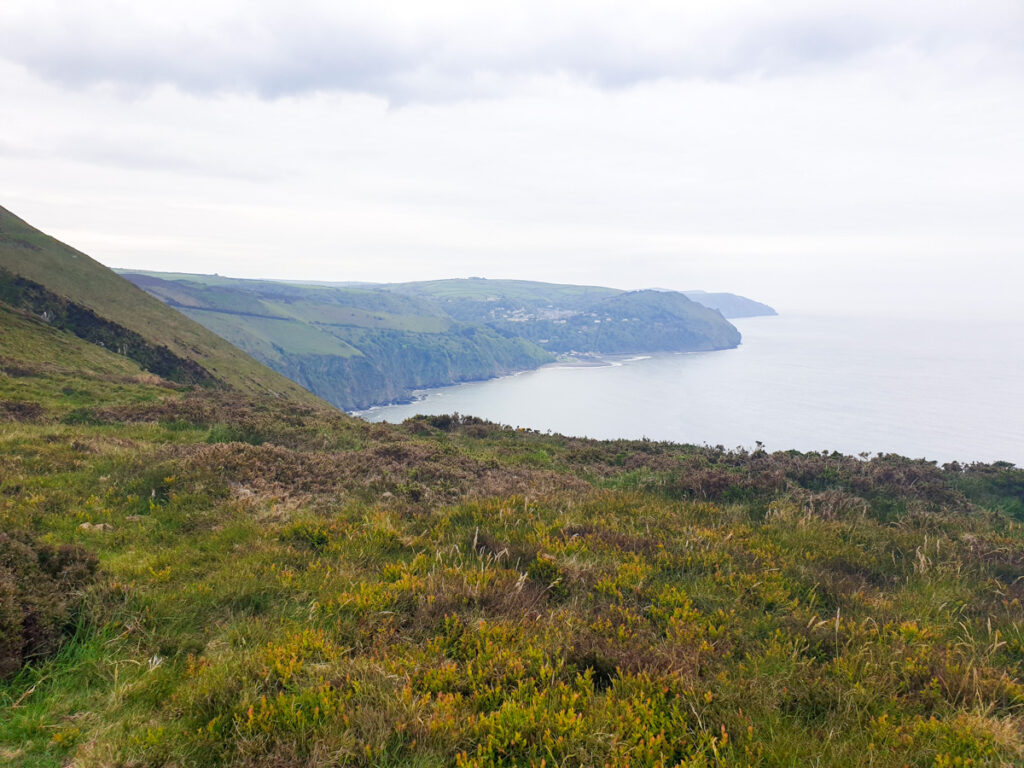
Lynmouth’s coastal location, sitting on the cusp of the Bristol Channel, is part of the South West Coast Path, which starts in Minehead.
I undertook the Porlock to Lynmouth walk a few years ago – and trust me, it’s not one for the faint-hearted!
Traversing up and down cliffs, into the Heddon Valley and then clambering back out of the gorge, with spectacular views of the sea and craggy coastline.
It’s gloriously isolated, with points of interest like Culbone Church (the smallest church in the UK!) and several river crossings en route (make sure you’re wearing waterproof shoes!).
12. Walk to Combe Martin
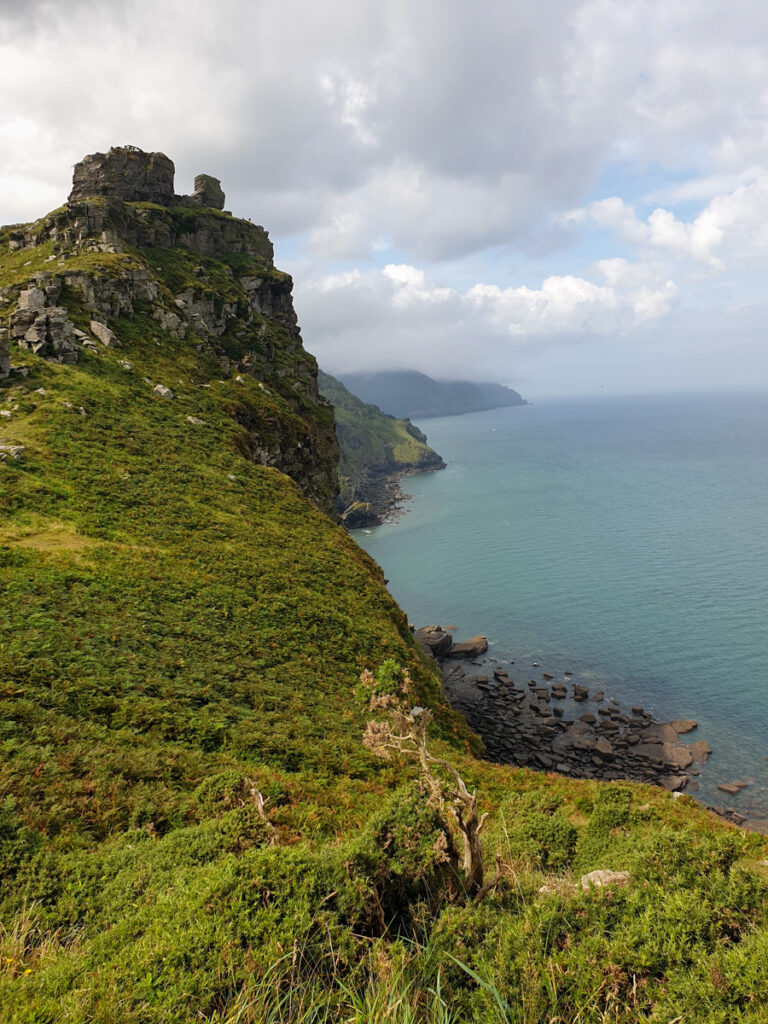
You could also walk the other way, to Combe Martin.
This walk is even tougher than the Lynmouth to Porlock walk, but it’s dramatic, with a rollercoaster-style pathway spanning up and down the cliffs!
It also spans the Valley of the Rocks.
Relax in the pub when you reach to Combe Martin – I love ice-cold drinks at the Focsle, which looks out onto the beach.
13. Check out the Lyn and Exmoor Museum
The Lyn and Exmoor Museum is a small attraction with a small exhibition of agricultural tools and information about natural history.
Learn about the tragic Lynmouth Flood and even experience a traditional Victorian dolls’ house.
The building’s a historical exhibit in itself, situated in Lynton’s oldest surviving house – and it’s rumoured to be haunted!
Places to visit near Lynmouth
Part of the charm of staying in Lynton & Lynmouth is its proximity to other charming villages and coastal towns. There’s an abundance of places to visit near Lynmouth, including Porlcok, Combe Martin, Simonsbath, Dunkery Beacon, Minehead, Ilfracombe and Barnstaple.
14. Porlock
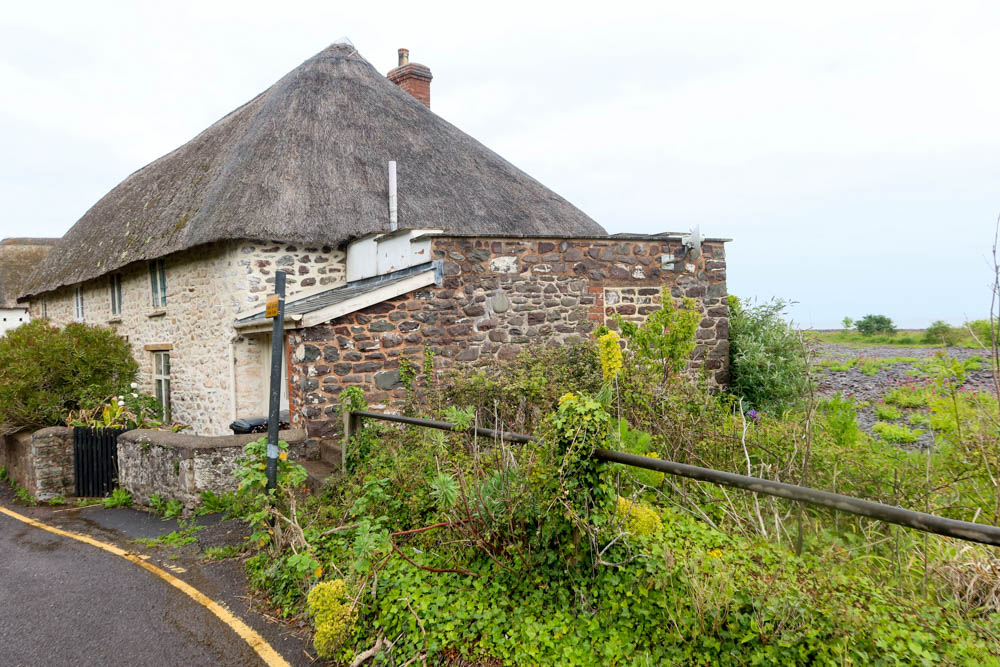
Sitting in the Somerset part of Exmoor National Park, Porlock’s a charming village lined with striking historic cottages.
The village is pleasant to walk around, and it’s also worth venturing down to Porlock Weir.
Famous for its oysters, Porlock Weir is a shingle beach which is one of the most isolated and relaxing in Somerset!
15. Combe Martin
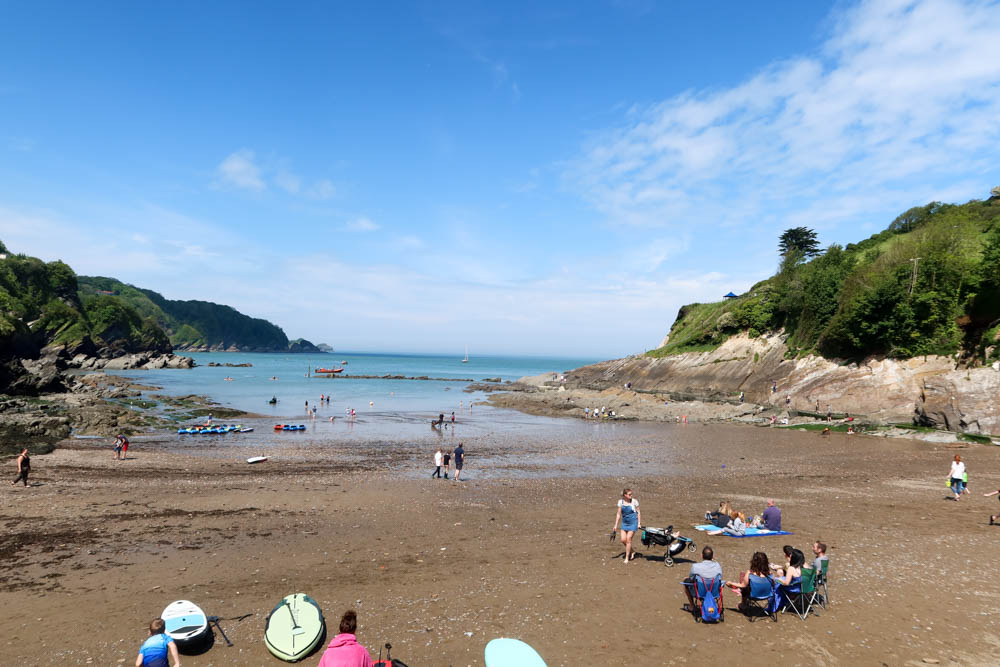
Combe Martin’s a chilled-out fishing village on the rocky North Devon coastline, sitting amongst huge cliffs, with rock pools and a wonderful seaside bar.
In the summer months, there’s a constant pulsating holiday vibe in the air, with shops selling buckets and spades and a variety of holiday accommodations!
We once stayed at the lovely Newberry Valley Touring and Camping Park which is just a short walk to the village!
16. Simonsbath
Heading inland, Simonsbath is a small Exmoor village.
There’s not a huge amount to do in town, but you can use it as a base for exploring more of the moor.
Take a walk to the nearby Wheal Eliza Mine, a copper and iron mine dating back to the 1550s that ultimately proved unsuccessful.
Or, hike along the Barle Valley to Cow Castle.
You’ll see moor of the moor (sorry!) as you drive to Simonsbath when you’ll traverse through some of Exmoor’s most beautiful scenery.
17. Dunkery Beacon
The highest point in Exmoor and the whole of Somerset, Dunkery Beacon is another optimal place to visit if you want to take a hike!
There’s parking at the base of the hill, and it’s around a 2.5 mile hike to climb up.
We actually parked nearby in Luckwell Bridge and extended our hike by walking across fields to get there.
18. Ilfracombe
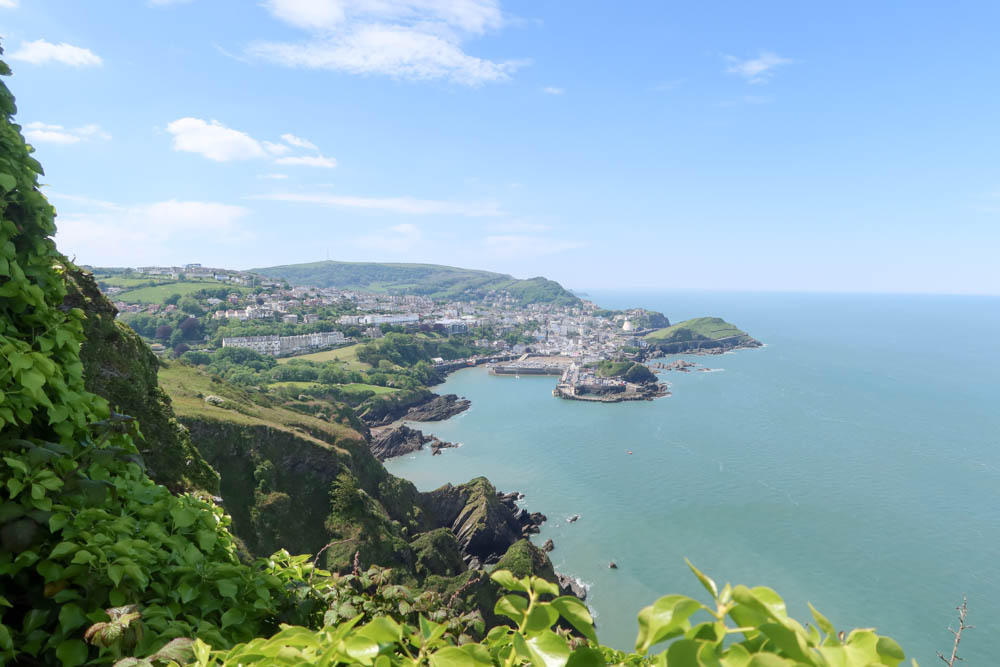
The harbour of Ilfracombe maintains a traditional air while still being a popular resort town since Victorian times.
Along with coastal walks, fish and chip restaurants and ice cream stalls, Ilfracombe’s renowned for its boat tours (take one from here to see Lynmouth from the sea!).
I adore the vibe of Ilfracombe; it’s one of my favourite towns in Devon for its charming streets and beautiful beaches, including the fascinating Tunnels Beaches.
19. Dunster
One of the most picturesque places to visit in the area, Dunster is a Medieval settlement with more than 200 listed buildings, am 11th century majestic castle and a historic Old Yarn Market.
The village is like a historic movie set, and it’s well worth making the day trip from Lynmouth!
20. Minehead
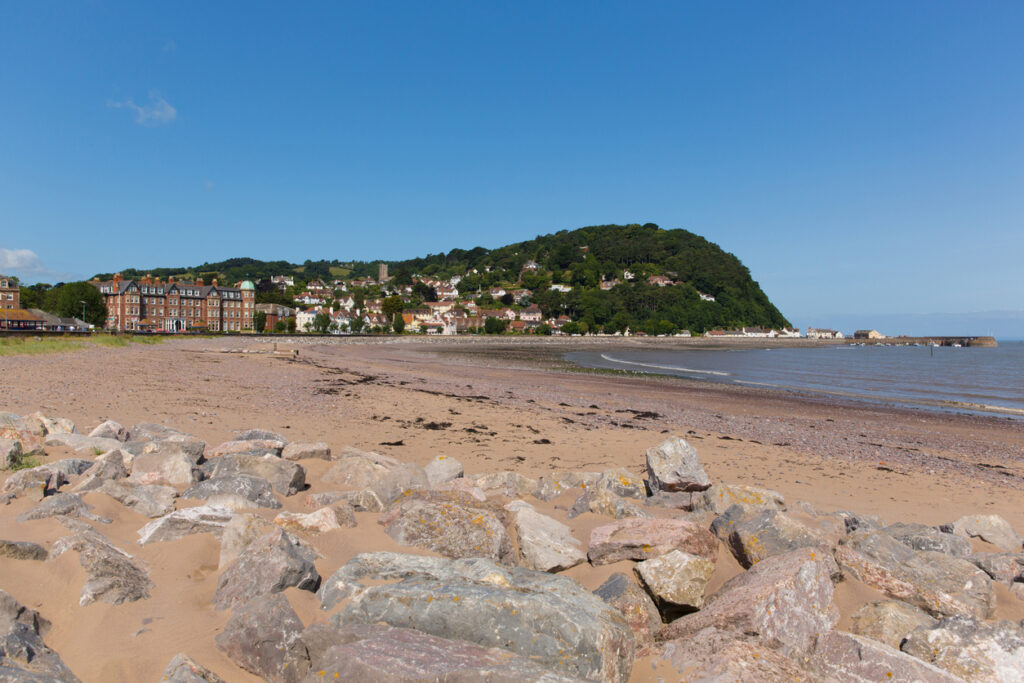
To the eastern edge of Exmoor – and the start of the South West Coast Path – Minehead is a popular tourist town with a large boulevard, pathways venturing up the clifftop and ample watersports opportunities.
It’s one of the busier towns in the region – there’s even a nearby Butlin’s – which makes it popular with families, especially during the school holidays.
Where to eat in Lynmouth
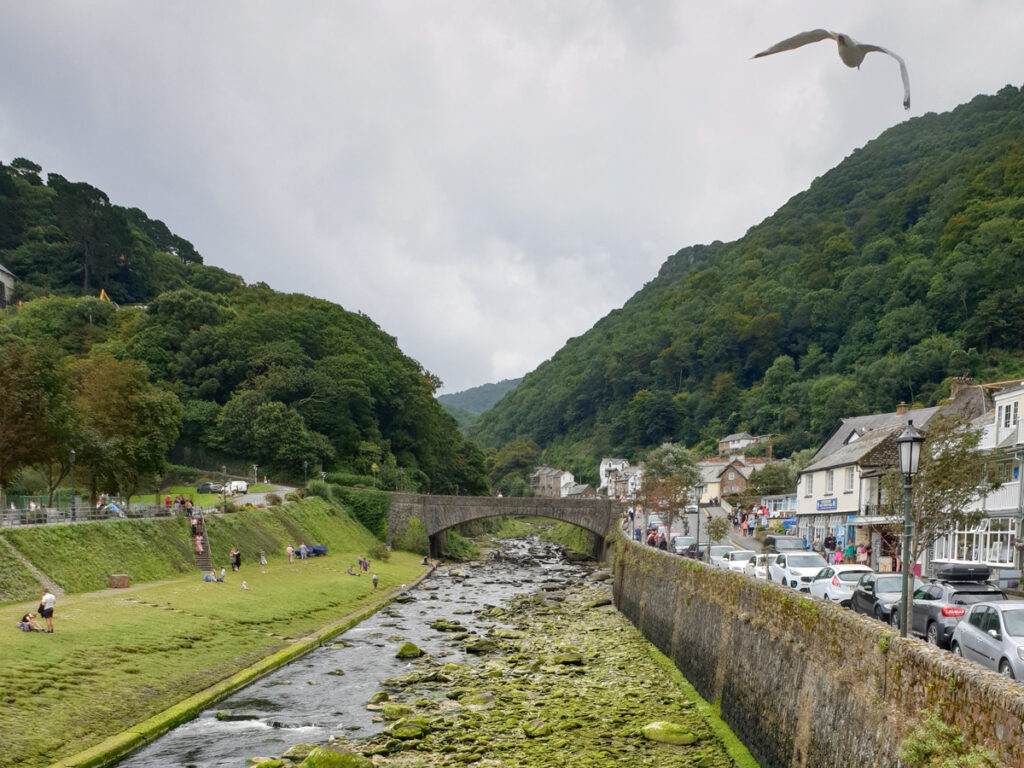
Most of the dining options are in Lynmouth rather than Lynton.
The Pavilion
We ate at the Pavilion, which offers very affordable pub-style food with a terrace with a fantastic view. They have plenty of vegan, vegetarian, and gluten-free options.
Esplanade Fish Bar
Also extremely popular was the Esplanade Fish Bar, which had a queue going around the block – so it must be good!
Rock House
Also on our list was Rock House, which has a menu full of traditional seaside pub food (ie. fish and British staples) and lovely outside gardens.
Where to stay in Lynmouth
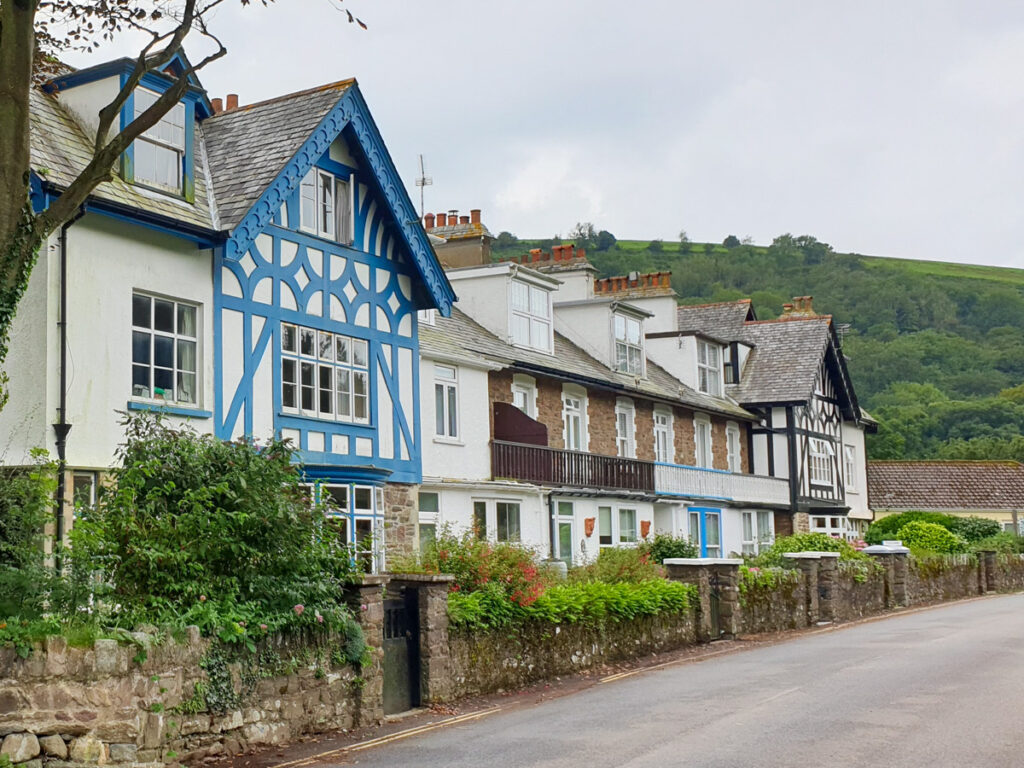
Many tourists just pass through Lynmouth, but if you want to stay I don’t blame ya, it’s a lovely place.
Rock House
There are lots of small B&Bs in town; including the aforementioned Rock House, which is right by the waterfront and offers homely, individual-styled rooms. Click here for more information.
Lyn Valley Guest House
Another option is the highly-rated Lyn Valley Guest House, which offers a delicious included breakfast and has very hospitable hosts. Click here to read more.
Highcliffe House
A traditional adults-only B&B located high on the clifftops of Lynton, Highcliffe House is bedecked in traditional decor and enjoys spectacular views over the coastline.
Mouthwatering breakfast is included in any stay here, whether you stay in a double or single room.
Accommodation in Minehead
There isn’t much in the way of budget accommodation in Lynmouth, so if you are looking for somewhere relatively cheap, I would recommend camping in Exmoor or looking for accommodation in nearby Minehead, where there is more of a range of options. Click here to see Minehead hotels.
Undecided about where you want to stay in Devon? Here is my where to stay in Devon – towns guide.
How to get to Lynmouth and Lynton

Lynmouth and Lynton’s isolation makes it so appealing – but it also means the twin villages are quite difficult to access!
The towns are located just off junction 23 of the M5 – take the A39 and follow it west, as it weaves through the Quantocks, Exmoor and leads to Lynmouth.
If travelling from elsewhere in Devon or Cornwall, you will be following A roads (potentially the A39) to Lynton.
If you want to drive down to Lynmouth, be ready for a very steep road with lots of turns!
It’s not the easiest place to access by public transport, but you can disembark the train at Taunton and then take a bus to Minehead, before boarding the Exmoor Coaster bus which leads to Lynmouth.
FAQs about visiting Lynton and Lynmouth
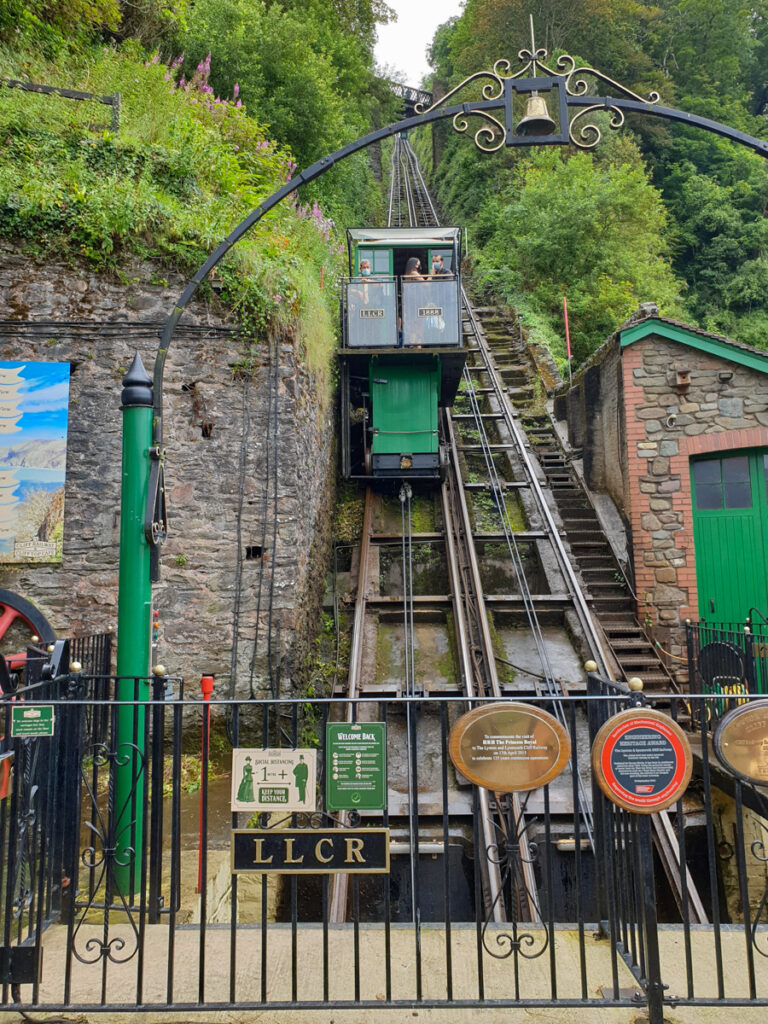
Which is best: Lynton or Lynmouth?
Generally, Lynmouth is thought to be better due to its proximity to the coast.
Lynmouth boasts a picturesque harbour and seaside setting, while Lynton offers amazing views and a more local atmosphere.
They’re very close to each other, so you can easily visit the two on one trip – or stay in one village and travel to the other!
Can you walk down from Lynton to Lynmouth?
Yes, you can walk down from Lynton to Lynmouth – the zig-zag path connects the two villages.
The towns are also connected by the famous Lynton and Lynmouth Cliff Railway, a water-powered funicular railway – so you could take the funicular up and then walk down!
Can you swim in the sea at Lynmouth?
In the summer season, the sea at Lynmouth may seem tempting – but currents are strong here, as it’s part of the very tidal Bristol Channel.
There is a tidal swimming pool at one end, but it’s very unsafe to swim at the river mouth. Take caution if you’re swimming anywhere around here.
Does Lynton and Lynmouth have a beach?
Lynmouth has a small beach, but it’s just a patch of sand – nothing like the beaches in nearby Woolacombe!
However, it does have a spectacular harbour and both towns offer beautiful coastal views. Lynton is high on the cliffs above Lynmouth, so its nearest beach is Lynmouth.
Why is Lynton called Little Switzerland?
Lynton earned the nickname “Little Switzerland” due to its hilly and picturesque landscape, resembling the scenery found in Switzerland – despite the fact that Lynmouth is very much coastal, and Switzerland is landlocked! The steep cliffs, wooded valleys, and breathtaking views contributed to this comparison.
How far from Lynton to the Valley of the Rocks?
The Valley of the Rocks is located about 1.5 miles (2.4 kilometres) west of Lynton – it’s easy to walk from the village, or you can drive.
If you’re travelling from Lynmouth, you’ll need to walk up the zig-zag trail and then travel to the Valley of Rocks area!
How many people died in Lynmouth?
In August 1952, Lynmouth experienced a devastating flood that claimed the lives of 34 people.
The flood was caused by heavy rainfall, flooding the waterways, and resulted in extensive damage to the town and its surroundings.
It’s often thought to be the worst flood in English history.
Is Lynton or Lynmouth at the bottom?
Lynmouth is located at the bottom, closer to the sea, while Lynton is situated on the hilltop above Lynmouth.
The two towns are connected by the Lynton and Lynmouth Cliff Railway and the zig-zag path, along with a steep road!
Is Lynmouth a town or village?
Lynmouth is classified as a village. It is a small settlement located in Exmoor, Devon, England. Lynton is also a village that connects to Lynmouth.
Despite their small size, Lynmouth and Lynton both attract visitors due to their natural beauty and coastal charm!
Are you ready to check out Lynmouth and Lynton?
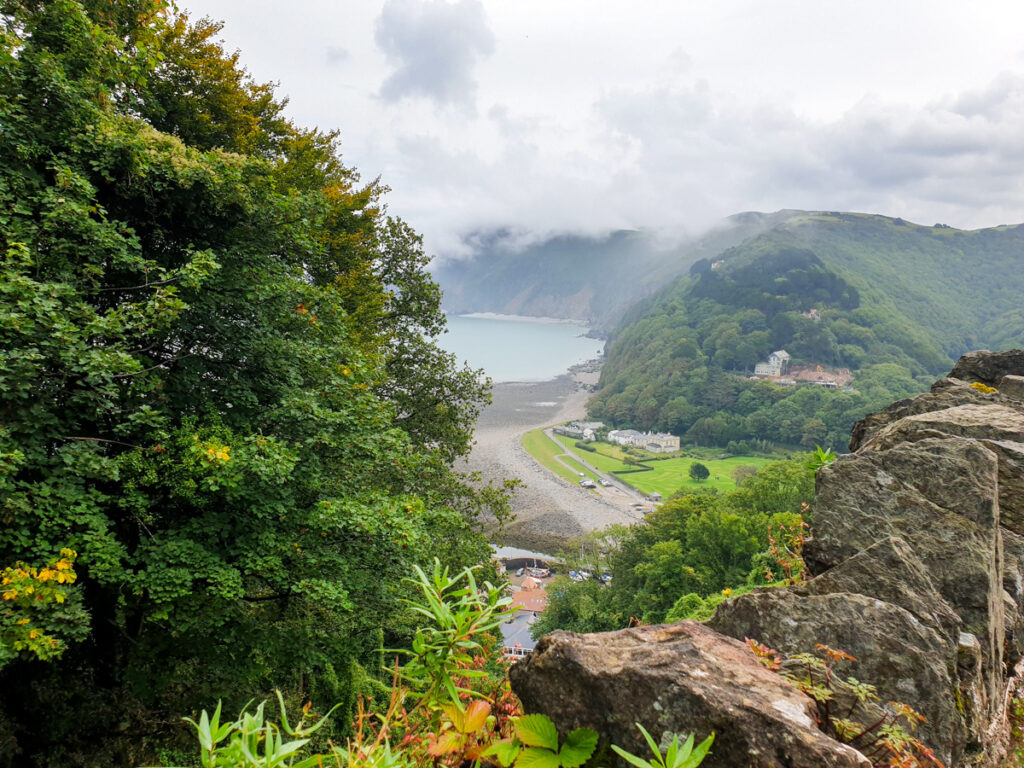
Whether you’re trekking through ancient woodland, admiring a feat of Victorian engineering or looking out for wild mountain goats at the Valley of Rocks, these twin Exmoor villages are among the most glorious places to visit in Devon!
I hope that you’ve found this guide useful – be sure to check out my Devon page for more posts from this wonderful county and feel free to drop me a message on Instagram if you have any questions.



